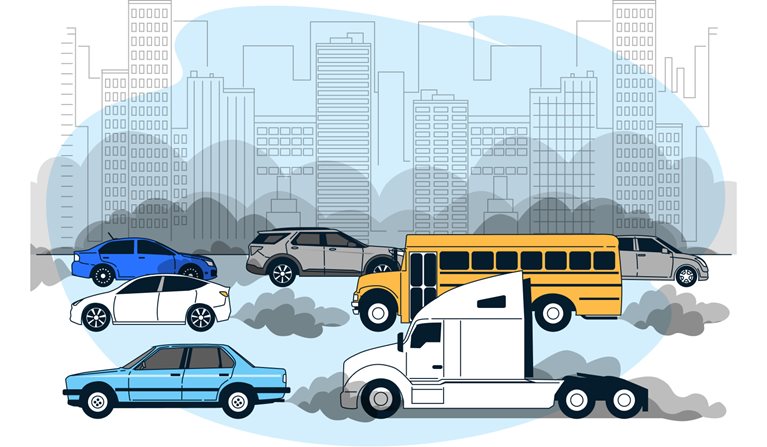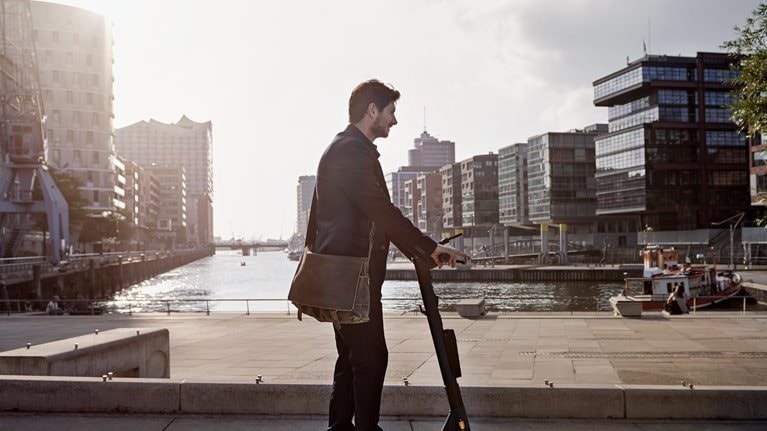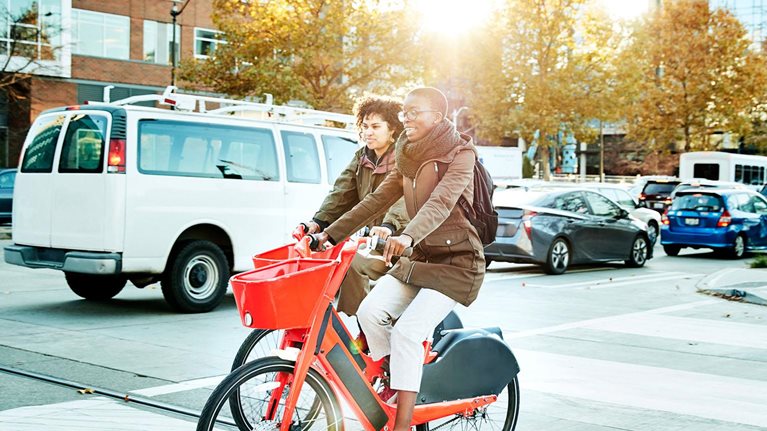A bike ride may be idyllic on a country lane but less so on a crowded city street. This holds true for both traditional bicycles and the electric models that are rapidly becoming more popular. Increasingly, however, both urban residents and city leaders have been advocating for more bike-friendly cities with safer roads and designated travel lanes. Their efforts have helped spur an uptick in bicycle usage, and interest continues to grow. In Copenhagen, for instance, residents now own about 750,000 bicycles—five times the amount of cars.1 Similarly, Lisbon plans to double the 84 kilometers (km) of bike lanes now in the city through additional investment.2
Questions remain, however, about how increased bicycle ridership will affect urban areas, including their transportation infrastructure, average commuting time, and environmental footprint. To provide some clarity, we created a scenario in which residents of a typical Western European city significantly reduce the use of private cars in favor of traditional or electric bicycles. In addition to mobility issues, such as road congestion, we examined how the shift would affect a city’s environmental health and economy. While this analysis focuses solely on a shift to bicycles, cities could obtain similar benefits if residents increasingly use any type of micromobility, including e-kickscooters, mopeds, and other small-format vehicles, in place of private cars. The only difference would be in the extent of the impact, since some micromobility modes produce greater gains than others.
A hypothetical European city now largely dependent on cars

The metropolitan area in our analysis has a population of about 1.1 million, and the city itself occupies about 370 km2. Today, private cars dominate the roads, accounting for about 71 percent of passenger kilometers traveled. Reliance on all types of micromobility is relatively low (Exhibit 1). The private car parc includes about 520,000 vehicles.

A big shift to bicycles
Our analysis explored what would happen if residents of the metropolitan area used bicycles for 22.5 percent of the kilometers they now travel by private car. This estimate is not arbitrary, since car owners in the McKinsey global 2022 ACES consumer survey indicated that they could replace 22.5 percent of kilometers now traveled by private car with some type of micromobility—not just bicycles but also e-kickscooters, mopeds, and other small-format vehicles (Exhibit 2).3 We focused solely on a shift to bicycles because of the complexity involved in quantifying the effects of a multimodal shift. In addition, bicycles are the primary micromobility mode today and will likely remain so. While it’s implausible that ACES (autonomous driving, connected cars, electric vehicles, and shared mobility) respondents would only shift to bicycles—for instance, some might have physical limitations that prevent cycling—our analysis provides clues about the major environmental, mobility, and economic benefits that could arise if all types of micromobility gain ground.

Every city wants the benefits depicted in our scenario, but achieving them will take decisive efforts, such as building mobility hubs where people can rent bikes and easily shift to public transit. Since a 22.5 percent shift solely to bike travel is implausible, cities must also think about other essential changes that promote the use of other types of micromobility, including the creation of charging spots for e-kickscooters. Regulations could also help, including the imposition of congestion charges to discourage traffic, the creation of no-driving zones, and laws forbidding on-street parking. Most importantly, urban leaders must also increase safety for micromobility to gain ground, since our analysis suggests that road fatalities would double—going from about 20 to 42—in the average European city if traditional and electric bicycle usage increases to the extent depicted in our scenario. The potential benefits of micromobility justify such measures and also provide urban leaders with an incentive to help residents who want to make the shift.


